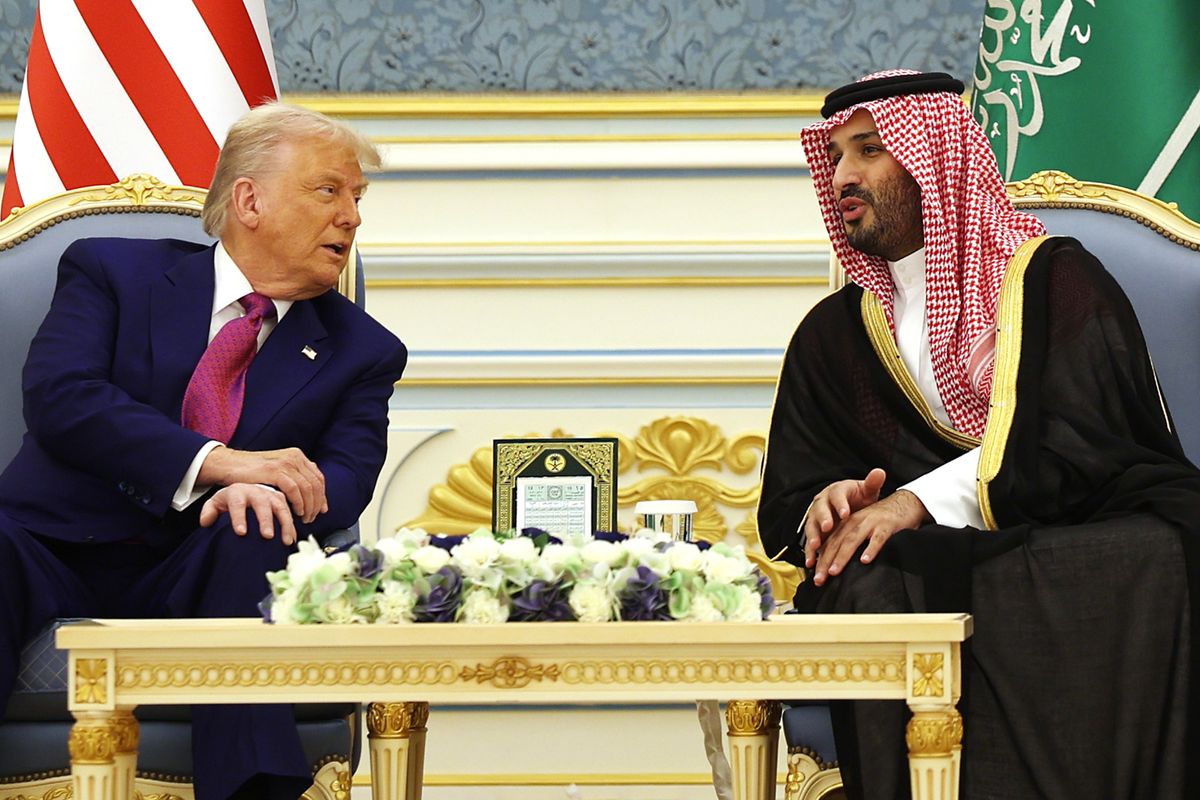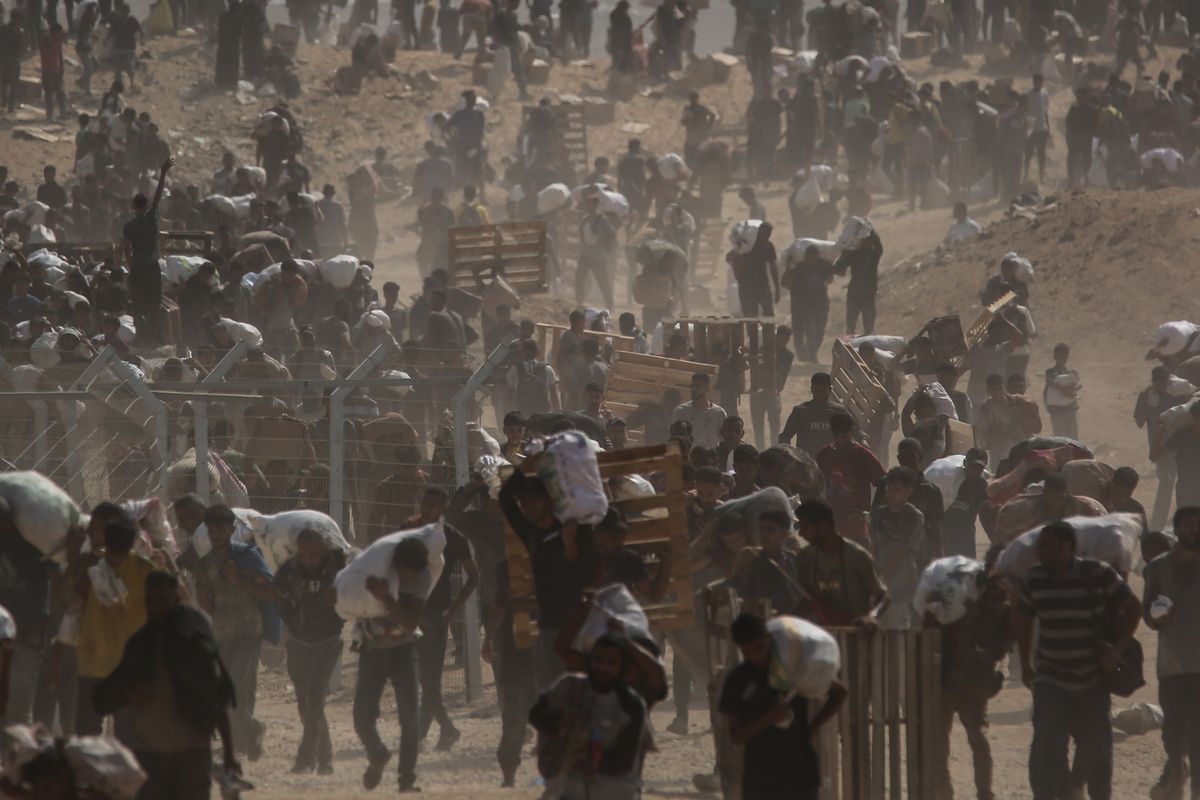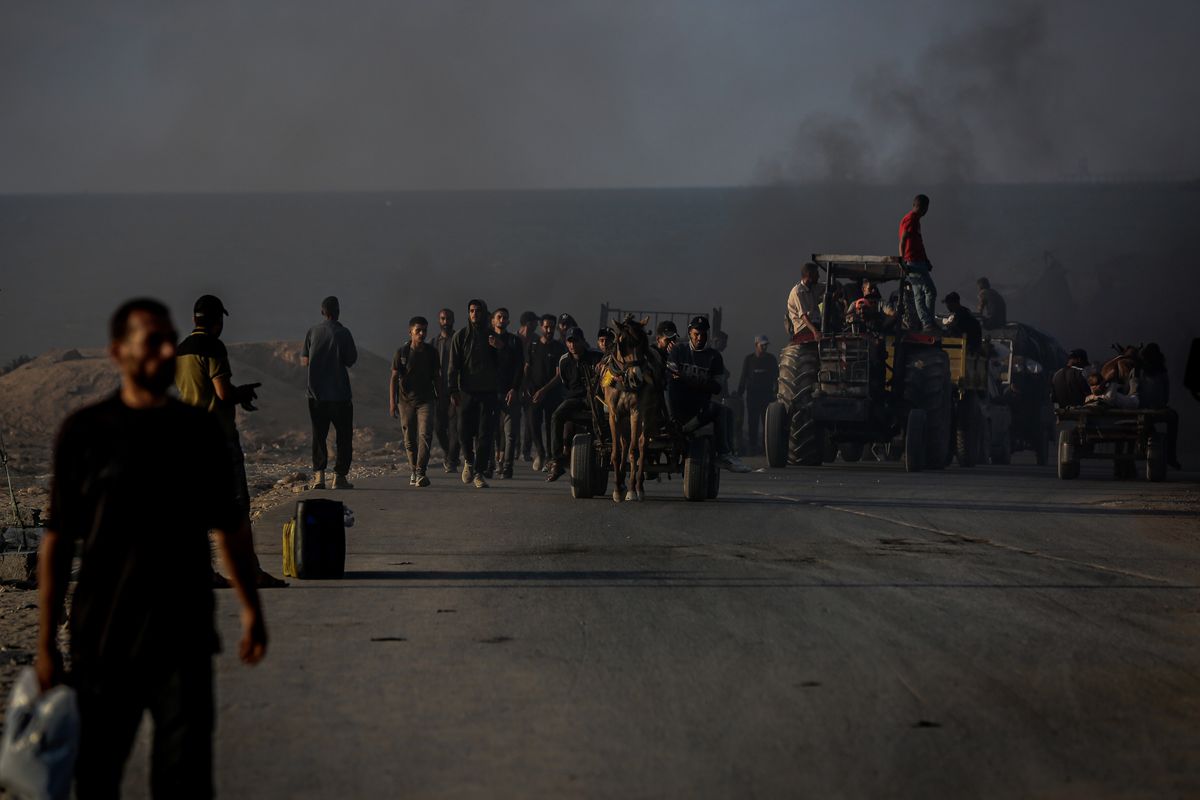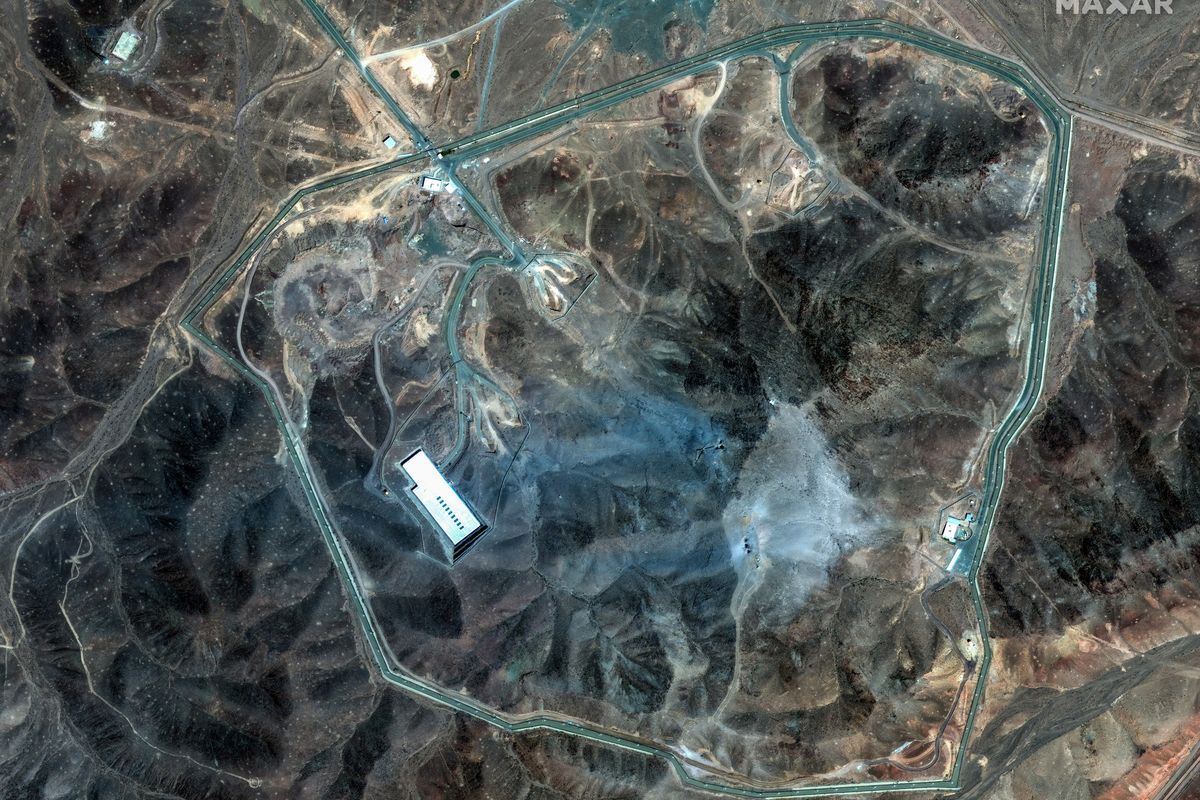Iranian President Hassan Rouhani warned Monday that military action in Yemen will fail. The warning comes as a Saudi-led coalition targeted Houthi rebels aligned with Iran, according to Reuters. Still don’t understand the strategic significance of what’s happening in Hodeida?
Consider that the city has long served as a hotbed for global espionage. In part one of a special Cipher Brief two-part series on the port city, Cipher Brief Expert Norm Roule, who is also the ODNI’s former National Intelligence Manager for Iran, shares his secrets for understanding how today’s actions are influenced by the past and how that understanding may shape the future.
Norman T. Roule, National Intelligence Manager for Iran, ODNI
'The Yemeni port of Hodeida has once more been thrust into the news. Little known in the West, the strategically located city is centuries old and has been the scene of multiple, now forgotten, Great Power competitions over the last century. Repeatedly occupied by the British, Italians, Saudis, and Turks, the port witnessed high-stakes multiple diplomatic and military events as well as espionage operations.'
As the United Arab Emirates, Saudi Arabia, and Yemeni government battle the Houthis, it would be useful to recall some of this history.
- Hodeida’s value as an important Red Sea port was well-known in the nineteenth century and drew Western companies. Sometimes to the annoyance of the Ottomans, Britain and Italy maintained consulates at the port to support growing regional commercial and political interests. By end of the nineteenth century, Hodeida’s population included a few dozen Europeans and Americans.
- But the city’s importance as a key Ottoman port also made it, and the surrounding coast, a target for blockade and bombardment by Italian war ships during the Italian-Ottoman War of 1911.
- The British vice-consul to Hodeida at the outbreak of the First World War was G.A. Richardson. Unsurprisingly, his relations with the local Turks quickly deteriorated and he was trapped in the city. On the evening of November 11/12, 1914, Turkish police forcibly entered the British consulate in search of him. Believing their goal was assassination, Richardson fled over a garden wall and sought the protection of the Italian consulate next door. The Turks soon stormed that building as well. He surrendered, after the Turks swore over the Koran that he would not be harmed. Italy protested to Constantinople and demanded Richardson’s return. After several months of being imprisoned in Yemen’s unhealthy interior, Richardson was allowed to leave Yemen in an Italian vessel in February 1915.
- Hodeida’s strategic location also drew Berlin’s attention as a site from which Germany could support its East African forces as well as manage Arabian operations. However, planning for the effort was ineffective, in part because of Ottoman interference. Nonetheless, in 1916, German Major Othmar von Stotzingen travelled with a small team from Damascus to establish a wireless station at Hodeida to relay Turkish communications to German forces in German East Africa, distribute propaganda to Abyssinia, Somaliland, and the Sudan, and establish an intelligence network into East Africa. The party carried radio equipment, propaganda material, and generous funds in the form of English gold coins and Austrian silver Maria Theresa thalers. Shortly after entering enemy territory, the group was attacked by a large Bedouin party in which some of Stotzinger’s colleagues were killed. The luckless German and other survivors returned to Damascus. However, their presence alarmed the Sharif of Mecca Husayn bin Ali who passed Stotziner’s captured documents to the British and accelerated his plans to launch the Arab Revolt.
- Hodeida also played a role in one of the First World War’s most dramatic escape stories which began more than 4,000 miles away at the Australian-owned Keeling Atoll in the Indian Ocean. The tale began when a fifty-man landing party from the Imperial German light cruiser S. Emden was launched of November 9, 1914 to destroy the international telegraph cables which transited Direction Island. Success would mean severely damaging British communication with its Asian colonies and fleet.
- On the morning of the assault, Kapitan Lieutenant Hellmuth von Mücke, the Emden’s Executive Officer, and his party went ashore while the Emden waited nearby. The mission was executed quickly, the landing team destroying or burning every piece of equipment they could find and cutting the telegraph cables.
- But a warning siren shrieked from the Emden. The team was stunned to find that the Emden had steamed away, chased by the better-armed Australian Cruiser the HMAS Sydney. It would only be a matter of time before the Australians returned to check the safety of their important communications system. Mücke’s men had no choice but to commandeer the aged, rotting, and badly-leaking freighter Ayesha and attempt to reach the neutral Dutch port of Padang, more than 700 miles away. After a dangerous trip, they docked on November 25 only to be brusquely told that they would be allowed to remain for only 24 hours to undertake a limited refit.
- Lacking navigation charts, the Ayesha and her worried crew set off the next day in hopes of quickly finding a sympathetic German Freighter. After two weeks of aimless sailing, they met the German steamer Choising on December 14 and scuttled the plucky Ayesha. The crew then followed a circuitous route to Arabia, hoping to find friendly Turkish allies. Finally, in January 1915, they reached Hodeida and managed to land without being observed by a nearby French cruiser.
- The arrival at Hodeida included a comic episode. Initial encounters with armed locals resulted in exchanges in which the Germans and Arabs discovered no common language but mutual suspicion. Communication was eventually achieved when Mücke pulled out a German coin and a Bedouin recognized the Kaiser’s profile. To their relief, Hodeida’s heavily armed Turkish garrison soon appeared, but almost attacked the party. The Turks thought the group to be a French landing detachment and arrived with cannon to repel the force.
- The question was how to travel to Germany. On January 27, 1915 they joined with the Turkish garrison and locals in a celebration of the Kaiser’s birthday which included band music and a meal at the home of Hodeida’s mayor. The next phase of this epic journey involved surreptitiously moving up the Arabian coast in two small dhows (sailing vessels), slipping past a British blockade before landing and enduring assaults by Bedouins in a journey northward, eventually finding safety and a train at al-Ula in Saudi Arabia. Those who survived this extraordinary journey arrived in Germany as decorated heroes.
- Throughout the war, the Turks used Hodeida to hold British prisoners, often in poor conditions. A June 29, 1917, attack to release detained men failed, and British war ships bombarded the city. British forces would not occupy the city until December 13, 1918.
- After the war, the British assigned the control of the port to the short-lived Idrisi Emirate of Asir. As the Emirate faded, in part due to Italian engagement with the Yemeni leader Imam Yahya of Yemen, the territory gradually fell under control of the Yemen government. In 1934, the city was occupied by a force led by the future Saudi King Faysal bin ‘Abd al- ‘Aziz but returned to Yemeni control the same year in exchange for territorial concessions further north.
- Italy’s efforts to dominate East Africa spilled over into the southern Arabia peninsula, much to the concern of British officials in the region who correctly interpreted Italy’s actions as an effort to expel the British from Yemen. Italy established several companies at Hodeida during the 1920s, as well as two radio stations. Italy’s espionage operations in Yemen were run from Sana, but almost certainly focused on Hodeida as well to cover other Europeans. British intelligence watched Italian shipping at the port closely and soon discovered that the Italians used the port to import weapons from East Africa. By 1926, London was sufficiently concerned over Italian moves that it warned Rome that an Anglo-Italian confrontation was increasingly likely over Yemen. Despite this warning, the Italians continued to use Hodeida to supply the Imam with weapons which he used in the 1934 conflict against Saudi Arabia. As the war moved to Hodeida, the British and Italians brought war ships to the port and landed large contingents of colonial troops to protect their local interests. Tensions between the forces was high and the war ships remained until the Saudis relinquished control of the port.
- After a relatively quiet phase in the Second World War, the port found itself at the center of Cold War rivalries. Throughout the 1950s, the Soviet Union took growing interest in Africa and southern Arabia and Moscow’s focus on the city spiked in the late 1950s. As part of a program to transform the port into a major Soviet economic and military base, Moscow sent hundreds of technicians and advisors to expand Hodeida’s port facilities in 1960-1961. The Soviet presence included a consulate as well as cultural and propaganda programs, to include making the learning of the Russian language a mandatory part of the local curriculum.
- In late 1960, hundreds of Chinese technicians arrived to support the construction of the Hodeida-Sana Road. The Chinese contingent would continue to grow, reaching more than a thousand in 1962.
- Yemen’s civil war of 1962 could be said to have fired its first shots at Hodeida. Following a failed assassination of Imam Ahmed, the would-be assassins fled to the offices of harbor master and fellow conspirator Abdullah al-Salal. With Egyptian support, Salal organized a rebellion which led to his becoming the president of the Yemen Arab Republic in September 1962.
- Throughout the 1962 civil war, Egyptian troops flooded into the city which quickly built shopping malls and apartments to accommodate the relatively well-paid occupiers. Hodeida’s port facilities expanded to accommodate the vast amount of ordnance and fuel that Cairo’s forces consumed in the conflict. Egypt’s presence at the city would eventually include a naval base, and a radar station as well as use of Hodeida airfield from which it launched Russian MiG aircraft.
- Russia’s east European partners were no stranger to the city. East Germans served in Yemen and used Hodeida to deliver arms to Front for the Liberation of Occupied South Yemen (FLOSY).
- A number of countries conducted espionage operations in the city throughout the 1970s.
- In 1972, Mossad sent its legendary Egyptian-born officer Baruch Mizrahi to Yemen to monitor Palestinian and Egyptian activities. Unfortunately for him, Mizrahi was captured in May 1972 while taking photographs in Hodeida. He was held prisoner by the Egyptians until a prisoner exchange in 1973.
- The Russian presence at Hodeida naturally included the KGB. Among its local personnel was Vladimir Ivchenkov who was under cover as a chief engineer. Also present during this time was Vladimir Nikolayevich Sakharov. A foreign ministry officer. Sakharov was coopted by the KGB before being recruited by the CIA and eventually defecting to the United States.
- The Sino-Soviet split had one humorous ripple in Hodeida. In the early 1970s, the Soviet and Chinese apartment buildings were quite near. With no air conditioning, Russian families rarely found sleep easy. According to one report, the Chinese would mount a wall and bang pot, blow bugles and shout curses against the Russians to disturb what little sleep they managed to achieve.
- Hodeida is also no stranger to refugees in modern times. Following the expulsion of Yemenis from Saudi Arabia during the Gulf War, hundreds of thousands of returning Yemenis formed shanty camps around the city.
Norman T. Roule, Former National Intelligence Manager for Iran, ODNI
Bottom line: As to the future, Hodeida will benefit tremendously from an end to the Yemen conflict. As the Red Sea is transformed by Saudi modernization, the UAE’s development of regional ports, and Chinese and European economic and military expansion, Hodeida’s strategic location will be a magnet to development. This will likely bring badly-needed dollars to the local economy, but the city will remain a focal point among those powers jockeying to commercially dominate the Red Sea.














